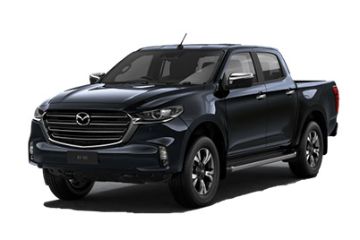![Mazda BT-50: This is why Mazda chose the Isuzu D-Max over the Ford Ranger 01]()
If there’s anyone with the capability to challenge Toyota’s supremacy in pick-up trucks, it’s Ford. Sure, the Ford Ranger doesn’t sell as well as the Mitsubishi Triton or Toyota Hilux but remember that on a global scale, the Ford F-150 is the world’s best-selling pick-up truck.
Built Ford Tough is not just a tagline. Truck culture is at the heart of Ford’s culture and there’s much to be gained by leveraging on Ford’s expertise in pick-up trucks.
![Mazda BT-50: This is why Mazda chose the Isuzu D-Max over the Ford Ranger 02]()
The outgoing generation Mazda BT-50 shares the same platform and engine as the Ford Ranger. It’s even built inside the same Auto Alliance Thailand (AAT) plant in Rayong, which is co-owned by both Ford and Mazda.
The relationship dates back more than 20 years ago, when Mazda was still part of Ford. Today, Mazda is an independent company but the arrangement with Ford at AAT still makes a lot of sense so both companies decided to continue with the co-ownership arrangement.
![Mazda BT-50: This is why Mazda chose the Isuzu D-Max over the Ford Ranger 01]()
However as you would have already know by now, the all-new 2020 Mazda BT-50 that was unveiled yesterday, is based on the latest generation Isuzu D-Max. The Mazda BT-50 will be built at Isuzu’s Samut Prakan plant in Thailand, which also makes the D-Max.
![Mazda BT-50: This is why Mazda chose the Isuzu D-Max over the Ford Ranger 02]()
So why did Mazda divorce itself from Ford to partner with Isuzu?
Mazda doesn’t have enough production capacity in Thailand. The AAT plant currently makes the Mazda 2 and CX-3, on top of other Ford models. The Thailand-assembled Mazda 2 is exported across the region while the CX-3 is only for domestic sales (Malaysian market CX-3 is imported from Japan).
![Mazda BT-50: This is why Mazda chose the Isuzu D-Max over the Ford Ranger 03]()
The CX-5 and CX-8 are imported from Malaysia. Since the AAT plant is shared with Ford, Mazda’s allocation of the plant’s capacity is maxed out but the ASEAN region is known for its punitive taxes on imported cars. In other words, no increase in sales until Mazda finds/adds more production capacity.
The solution is to free up capacity at AAT by taking out the BT-50 so Mazda can produce more passenger car models there.
![Mazda BT-50: This is why Mazda chose the Isuzu D-Max over the Ford Ranger 04]()
By taking out the BT-50, Mazda can in theory, have the option to produce more SUV models there, which are in greater demand. The CX-30 is one such candidate.
Since Mazda does not own any other plant in Thailand, the region’s biggest market for pick-up trucks, an alternative partner is required. In comes Isuzu.
The Isuzu D-Max might not be as sexy as the Ford Ranger but if there’s anyone that can build better pick-up trucks than Ford or Toyota, it is Isuzu.
![Mazda BT-50: This is why Mazda chose the Isuzu D-Max over the Ford Ranger 05]()
As a company, Isuzu is rather boring but it can boast of something nobody else can – Isuzu is the world’s biggest manufacturer of diesel engines. Nobody makes diesel engines better and more reliable than Isuzu.
Don’t let the D-Max’s standard engine’s tune fool you. All Isuzu D-Maxes are tuned for high fuel efficiency and durability in the toughest operating conditions. Its low power output is deliberate, taking into account varying levels of fuel quality the car is likely to run on.
![Mazda BT-50: This is why Mazda chose the Isuzu D-Max over the Ford Ranger 06]()
Just ask Thai drag racers on why the Isuzu D-Max, rather than a Hilux is their vehicle of choice when it comes to drag racing. Isuzu engines are super tough.
The decision to partner with Isuzu was an easy one for Mazda. The Isuzu D-Max has a proven reputation in reliability and durability, and all Mazda had to do was to re-skin it in accordance to its own Kodo design language standards.
![Mazda BT-50: This is why Mazda chose the Isuzu D-Max over the Ford Ranger 07]()
Plus, both the Mazda BT-50 and Isuzu D-Max are targeted at very different crowds. The BT-50 is aimed at a more lifestyle oriented crowd while the Isuzu D-Max is aimed at people who use their trucks to get work done, rather than trying to look pretty. The arrangement makes a lot of sense for both companies.
The fact that both companies are Japanese also makes communications a lot easier than dealing with the Americans and Australians (Ranger was developed by Ford Australia).
Meanwhile, Ford is also moving ahead on its own with Volkswagen. Wolfsburg has given up on the slow selling Volkswagen Amarok and the next generation Amarok will be based on the Ford Ranger.
















